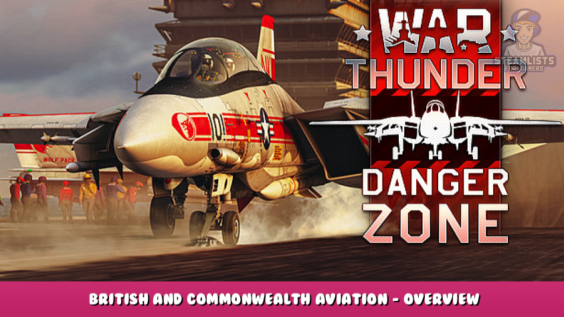
This guide is an overview of British and Commonwealth aviation, with tips and tricks to new and existing players wishing to play the Great Britain tech tree.
#WTGuide1
Introduction
Like all other tech trees, there is no one single speciality for British aviation, and there is something new for everyone to try out at all ranks. However, like other tech trees, there are numerous vehicles that are entirely unique and have their own specific playstyles and quirks to work through in the pursuit of victory. In this guide, I will walk you through the basics of each rank, run you through the armaments you will come across, and give an overview of the archetypes of vehicles you’ll find, as well as some choice examples and personal recommendations.
This guide is focusing entirely on Air Realistic Battles. I do not play Arcade, and many of my points will be irrelevant to Arcade players. Simulator players may find my information useful, but also lacking to Sim-specific portions of air combat (like, for instance, visibility).
Table of Contents:
- Introduction
- Archetypes
- Armament and Payload Part I
- Armament and Payload Part II
- The Spitfire Family
- Highlights
- Common Opponents
- Strategy
- Jets
- Missiles
- Summary
Written up-to-date to information present in Update 2.17 ‘Danger Zone’.
Image above: Hawker Sea Hawk WF223 of 738 Squadron, Fleet Air Arm, landing aboard HMS Centaur, 1950s
Archetypes
Fighter – These are your general-purpose combat aircraft.
Typically with numerous guns of varying calibre, good manoeuvrability, and solid speed, most fighters are the best choice for offensive combat and will be at least somewhat of a challenge to fight if someone competent is behind the stick. Fighters have extraordinary speed and fantastic turn time; both are one’s major advantages when engaging other aircraft archetypes as you can out-run and out-turn most others. (On Britain: Spitfires, Hurricanes, Furies, Nimrods, Gladiators)
Interceptor – Sometimes getting airspawn but usually combined with the fighter archetype, it is important to differentiate between the two. While dedicated fighters (such as the Spitfire, Bf 109, or Yak-9) rely on their turn time and quick-firing guns to take out enemies, interceptors (such as the Tempest, Fw 190, and MiG-3) rely on a strong arsenal and a powerful engine to gain speed, attack, and then outrun the enemy when they try to give chase. (On Britain: Typhoons, Tempests, Sea Fury FB.11, Seafire FR.47)
Heavy Fighter – Typically of twin-engine format and always getting airspawn, heavy fighters are similar in role to interceptors but with very little ability to use their turn rate to win a fight. While a Tempest or Sea Fury may attempt to turnfight a similar archetype aircraft, most heavy fighters will find themselves at an immediate disadvantage in such engagements. When using ‘boom-and-zoom’ strategy, they are potent fighter killers and bomber hunters, but are vulnerable when not. (On Britain: Beaufighters, Mosquito Mk.VI, Whirlwinds, Hornets, Brigand B.1)
Attacker – Meant to engage ground or naval targets, attackers aren’t supposed to fight other aircraft. However, most are equipped to eliminate targets with extreme prejudice and usually end up being extraordinarily competent in the air-to-air role anyways. When fighting their intended targets, they come with a wide array of guns, bombs, rockets, and occasionally torpedoes and mines to get the job done. Many come with air brakes for solid diving ability, but also lack the token manoeuvrability that would make one pass as a fighter or a dedicated dive bomber. When engaging other aircraft, unless a bomber, it is best to be cautious, as your only advantage will be your guns (except in the case of the Wyvern). If possible, fly as a group to maximise effectiveness on all targets, staying just in front of or under the fold of your main fighter group. Often, Britain combined this type with heavy fighters in favour of multi-role ability and you will see very few dedicated attackers on the tech tree. (On Britain: Mosquito FB Mk.XVIII, Tempest Mk.V [Vickers P], Wyvern S.4)
Dive Bomber – Similar in role to attackers, dive bombers are mostly equipped with air brakes and focus on a strong arsenal of bombs to eliminate bases and ground targets. Some of them (like the V-156-B1 and several that have not been added to the game [Barracuda, Skua, Spearfish]), once the bombs are dropped, can be used in a fighter role. They are most notable in low-tier, as that is where their bomb load is significant enough to destroy bases and aid in ending the match far quicker. They are less distinct on the British tree than on, say the German one, but there are still some notable examples that fulfil the role. (On Britain: V-156-B1, Hampden TB Mk.I, Fireflies, Firebrand TF Mk.IV)
Light Bomber/Frontline Bomber – On other nations, this role usually includes dive bombers, but in the case of Britain they are far separated. While dive bombers have a usable arsenal of weapons for once their payload is released, British light bombers are by design level bombers with a heavier bomb array and dedicated defensive armament around the aircraft. Light bombers have to their advantage good turret coverage and solid speed so one can escape engagement on their way back to the airfield. Barring some choice exceptions, it is never recommended to engage directly in a light bomber as they are not equipped for enduring combat alone. (On Britain: Beaufort Mk.VIII, Blenheim Mk.IV, Hampden Mk.I, Havoc Mk.I, Boston Mk.I, Hudson Mk.V)
Medium Bomber – While light bombers and dive bombers are suited for ground and naval attack in addition to bombing bases and strategic targets, medium bombers are less used in this role. Medium bombers are used almost exclusively as bomb platforms for destroying bases quickly and efficiently. Sporting faster speed than their heavier counterparts and a solid array of defensive armament, they are both fast with their intended purpose and can defend themselves with significant accuracy whilst performing it. While light bombers rely on speed and limited manoeuvrability to evade enemy fire, medium bombers are generally much slower but have far better gun coverage, and as a result can use turrets and flexibly-mounted weapons in an attempt to deter enemies, critically damage enemies, or… well, just shoot their squadmates. They can do these things with far better results than light bombers, whose weapons are largely superficial deterrents in the event that they are intercepted. (On Britain: Wellingtons, Sunderlands)
Heavy Bomber – In keeping with the use of a medium bomber, heavy bombers are rarely used for anti-ground and anti-shipping runs and are most effective in destroying stationary strategic targets. Whereas medium bombers typically only have the bomb load to destroy one base before needing to restock, heavy bombers can endure and have bomb bays large enough to deal significant damage to or even destroy multiple bases. Their defensive armament is substantial, and when enough are trained on target they can easily dispatch with enemy fighters. Beware, though, that heavy bombers in War Thunder are not as durable as their real-life counterparts, and eliminating hostiles with haste and accuracy is your biggest goal in the event of an interception. All bombers spawn high in the air, but heavy bombers spawn the highest, giving them a significant advantage of altitude; this is also the only advantage they have over the enemy. (On Britain: Halifax B Mk.IIIa, Stirlings, Lancasters, Lincoln B Mk.II)
We’ll cover jets in a later section, as all of these main archetypes apply for them, too, but jets are an entirely different playstyle to propeller-driven aircraft regardless of nation. It’s going to be a while until you can fly any jets, anyways, so for now the above is your main resource for information.
Armament and Payload – Part I
The British line comes with a wide range of weapons, though a select few remain to endure as staples throughout the line. While the arms themselves may not vary, the combinations with which they are used are what usually make the difference. While the list of weapons is significant, the British use them in familiar ways through the tech tree, especially in regards to bombs.
Browning 7.7mm machine gun
The most basic weapon used by the British, these will prominently feature as the standard auxiliary armament until the age of jets. While not able to do much alone, their use will begin to show with constant or concentrated use. On some early examples of fighters that use Browning 7.7s as their main armament, they will use eight to twelve with deep reserves of ammunition to utterly decimate enemies through sheer volume alone.
Browning 12.7mm machine gun
Far more rare on British planes than its 7.7mm brother is the Browning 12.7mm. On American aircraft, these are frequently seen as primary weapons, though on British aircraft they are most typically used aboard bombers as turret armament. Examples exist of 12.7mms being used as primary armament, though they are few and far between.
Hispano Mk.I 20mm cannon
Alongside the Browning 7.7mm, the Hispano lineage is the most common large calibre weapon you will see until the age of jets. Unlike its successors, though, the Mk.I variant barely makes a show. However, on the aircraft it does appear on, they are surprisingly accurate and reliable from the start, contrasting many colloquial opinions on the Hispano cannon pattern. Drum-fed only, the Mk.I’s major disadvantage is low ammunition count.
Hispano Mk.II 20mm cannon
The most numerous of the Hispano cannon line, the Mk.II variant is featured prominently on almost every fighter up to Rank IV. Using a belt-feeding system rather than the ammunition drums of its predecessor, the Hispano Mk.II typically gets much deeper reserves and are used in greater numbers in loadouts. From wing-mounted fury to turret-mounted defence, the Hispano Mk.II needs little introduction. On stock it is known rather negatively as the ‘Hisparko’ with stray bullets flying almost sideways, far from the intended target. Regardless, once brought up to speed (and especially with HEF and SAPI rounds loaded), it soon becomes apparent why the Hispano is a staple of British aviation.
Hispano Mk.V 20mm cannon
The last major chronological variant of the Hispano cannon pattern, the Hispano Mk.V differs from its brethren insofar as it has a shortened barrel (bigger spread and velocity) and more explosive rounds (bigger boom and burn). While this means that leading your shot will be different than before and the ‘Hisparko’ moniker may come back to mind, the Mk.Vs are a worthy successor and a unique option on the tech tree.
Hispano-Suiza HS.404 20mm cannon
Though not technically British, many French aircraft used to be a minor portion of the British tech tree before the French tech tree’s inception. Therefore, in case you run into them or somehow happen to get your hands on one, this cannon is good to know. The HS.404 is the original variant of the Hispano cannon pattern, with the Hispano Mk.I being the license-built variant of it. Therefore, it has the same usage and techniques as any aircraft armed with the Mk.I, though with differing but similar belt options.
Vickers S 40mm cannon
A mid-sized aircraft cannon larger than most armament you will see on Britain, the Vickers S is only seen on the Hurricane Mk.IV as an underwing loadout option. The cannons are powerful and have ample belt options for heavy air and ground attack, but be warned that at far range they can be inaccurate and knowing how to lead one’s shot is imperative as the rounds are significantly heavier than any 20mm cartridge.
Vickers P 40mm cannon
Equally as infrequent as the Vickers S, the Vickers P is only seen on the Tempest Mk.V (Vickers P) and make up its only armament. While largely similar to the Vickers S, the P requires upgrades through the research tree, and on stock are less accurate than the Vickers S and belt options are limited. Once upgraded, the Vickers P can punch clean through tanks and ground targets with ease, but still suffer from inaccuracy and the inherited weight of its predecessor, making close air support difficult as its aiming logic is quite unique.
Molins 6-pounder Class M 57mm cannon
Like the other tank-busting cannons on the British line, the Molins Class M is unique to the Mosquito FB Mk.XVIII. With the stable Mozzie behind it, the Class M is quite powerful and can deal with the whole range of tank types as well as most ground targets. Though inaccurate on stock, once upgraded the Class M is an extraordinary resource for ground attack at mid-tier and shines in the Simulator Battles mode.
ADEN 30mm cannon
Developed in the immediate post-war as a direct improvement upon German autocannons (specifically the Maschinenkanone 108), the ADEN 30mm cannon is the gun of British jet power. While not particularly accurate and with a slightly decreased muzzle velocity compared to the Hispano Mk.V, its sheer rate of fire and penetration ability allows a well-aimed ADEN to turn anything into dust by showering the entire area with lead. Beware of your ammunition count, though, while it may seem high, so is the ADEN’s rate of fire. Extraordinarily effective for air-to-air combat and adequately deadly for ground strike, the ADEN is the quintessential weapon of Britain to the end of the tech tree.
ADEN Mk.4 30mm cannon
The final production variant of the ADEN pattern, the ADEN Mk.4 offers minute improvement over its predecessors, though to the regular player the Mk.4 will play no different.
M61 Vulcan 20mm cannon
The other foreign addition to British armament is the American-made M61 Vulcan, introduced aboard the Phantoms. A rotary cannon, it has a delayed response from the trigger pull and is a smaller calibre than the ADEN, but is no less powerful. Like with the ADEN, the M61 is not particularly accurate, but muzzle velocity and rate of fire make up for it by spraying the entire area with rounds. If something gets hit with a Vulcan, it dies.
General Purpose bomb Mk.IV
The main loadout bomb for essentially all British aircraft up until the highest tier of jets, the GP Mk.IV comes in multiple sizes for different targets. The lowest weight British bomb available in War Thunder is the GP Mk.IV (250 lb), typically seen in pairs on fighters and fighter-bombers or in mass quantity on medium bombers. Next is the GP Mk.IV (500 lb), seen on some attackers and in large groups on medium and heavy bombers.
General Purpose bomb Mk.I
The largest standard issue bomb seen on British aircraft, the GP Mk.I is a 1000 lb bomb and most commonly seen in numbers loaded into heavy bombers. The Mk.I and Mk.IV GPs use TNT as their explosives and scale exactly with the TNT explosive equivalency based on the explosive mass numeric.
Medium Capacity bomb Mk.I
Replacing the GP Mk.I as the standard 1000 lb bomb, this has a larger explosive mass by using Amatex, Amatol, RDX, and Minol in variation. These are improvements over the GPs and means a bomber has a larger capacity of destruction with the same number of bombs.
High Capacity bomb Mk.II
At 4000 lb capacity, the HC 4000 is a massive ordnance piece and massively useful on the bombers they are equipped on. At lower tiers aboard the Wellingtons, the HC 4000 can deal devastating damage to a base or airfield. Little in War Thunder matches save for the Pe-8’s FAB-5000, and it will always be useful regardless of the map.
Armament and Payload – Part II
High Explosive Medium Capacity bomb Mk.I, Mk.II, Mk.M1
A combination of several bombs, each act similar with the main difference being explosive mass. Within this type are the 1000 lb, 540 lb, and 500 lb bombs. These are found at high tiers on the newest of jets and certainly show it with quite large explosive mass compared to previous bombs of equal weights.
RP-3
The first and most numerous rocket type one will encounter on Britain, the RP-3 is a staple of British ground attack capabilities, equipping some aircraft with entire wing-fulls of RP-3s to rain upon enemy armour. While not accurate or with any large explosive payload, its average armour piercing aspect and alright explosive mass will be enough to deal with most tanks up to 4.7/5.0.
RN
Available on a couple select jets, the RN can be seen as the successor to the RP-3, being better on all aspects but retaining the general archetype of ‘unguided rocket’. These are rare and are usually swapped out for bombs or missiles, but are still effective when needed.
CRV7 M247
Sourced from Canada, the CRV7 is a standard issue rocket in modern times. In-game, however, only one aircraft (the Jaguar GR.1) and a helicopter have them as options, but they’re massively effective when used properly. Compared to its predecessors it has a much flatter trajectory, making it much easier to aim, and much harder impact. All around a solid choice.
AP Mk.I, Mk.II
The standard alternative to the RP-3, the AP rocket does as its acronym suggests: pierces armour. With a smaller explosive mass but a larger penetration range than its contemporary, the AP rocket makes for good precision strikes against well-armoured targets, leading to crippling hits or instant kills. Differences between the Mk.I and Mk.II variants are negligible, and can largely be used identically.
Triplex RP
A direct development of the RP-3, the Triplex RP is three RP-3s strapped together. Only available aboard the Sea Fury FB.11, the Triplex is a very unique choice that often doesn’t get to shine. Because it has the mass of three RP-3s, it is equally good for ground attack as it is for air-to-air. One hit with a Triplex RP will annihilate a slow-moving bomber and could critically damage heavily-armoured tanks.
Uncle Tom
A large anti-shipping rocket, the Uncle Tom is a rare but effective choice to use against ships, tanks, and armoured emplacements. They are particularly difficult to aim, but a direct hit (or even indirect due to overpressure) can give massive rewards.
Red Angel
Only available in-game on the Wyvern S.4, the Red Angel is another large anti-shipping rocket that is extraordinarily effective at its job. While not having humongous penetration range, its impact detonation provides the user with ample means to thoroughly overpressure their enemies. Against boats and ships, tanks, and planes alike, the Red Angel is certainly a portent of doom for those that get hit.
The Spitfire Family
Much like the Yaks on the Russian tree or the Bf 109s on the German tree, do not be fooled by the long lineage of the Spitfire; many are similar, none are the same, and each have major differences from one another. Each has their specific use and can all be handy to have for different situations and encounters. From models introduced before the outbreak of World War II to models in the tumultuous years after, War Thunder gives an almost complete highlight of Britain’s most famous fighter. Ironically, though, the last versions of the pattern (Spiteful, Seafang) are not presently in the game.
The Spitfires are the most iconic and one of the most numerous aircraft on the tree, as well as the most versatile at all tiers. From destroying Bf 109s at Rank II to fending off Yak-15s at Rank IV, the Spitfire will endure. Versions differ in their use; the Mk.Ia is a sterling turnfighter, the Mk.24 is a fantastic boom-and-zoomer, but both fall under the Spitfire family.
Staple versions at all tiers are essential grinding tools for the British tree, and it’s pretty much required to have the Spitfires unlocked for maximum efficiency while moving down the line. Likewise, the naval aviation line is one of the most powerful on Great Britain and includes the Seafires, navalised Spitfires with their own unique properties.
The bottom line is that Spitfires will be some of your most useful aircraft from their superior manoeuvrability to their performance at most altitudes, as well as their widely varied arms and armament.
Image above: Spitfire Mk.Is of No. 610 Squadron, Royal Air Force, 1940
Highlights
This section will exclude the Supermarine Spitfire, as they are covered on their own.
Sea Fury FB.11
The Hawker Sea Fury is an often overlooked high tier prop sitting at a comfortable 5.3 battle rating. With potent armament consisting of four 20mm Hispano Mk.Vs, the Sea Fury can rip apart its opponents with surprising ease. This, like the Tempest it was derived from, is far from a turnfighter, and is one of Britain’s most powerful energy fighters. With a Bristol Centaurus pulling it along, the Sea Fury performs adequately at almost all altitudes and shines when put into a dive. As it is a naval aircraft, it is light for its type but can be broken apart much easier, with caution in mind it can be put in the most dangerous of encounters and have a solid chance of coming out alive.
Whirlwind Mk.I
Like the Sea Fury, the Whirlwind is a heavy fighter overlooked in favour of similar aircraft like the Mosquito and Beaufighter. Do not make that mistake. With two powerful engines for the tier, tightly-grouped nose-mounted 20mm Hispano Mk.Is, and a very miniscule profile for the archetype, the Whirlwind makes for an extraordinary bomber hunter and a competent energy fighter. It does not handle damage well and performs poorly on one engine, but it just means one has to rely even harder on proper energyfighting routines. Its premium counterpart improves yet more by making its sparing ammunition count even deeper, giving the Whirlwind more endurance at the cost of some weight gain.
Wyvern S.4
Players will always encounter Wyverns as it is one of the most powerful premium aircraft on the British tree. As a turboprop at a relatively low tier, it can out-speed pretty much anything, especially when it has energy, and to counter this has enormous flaps and an airbrake system. Armed the same as the Sea Fury and with a wide array of payloads (including some unique weapons, see the armament section), the Wyvern is well-suited for any situation that isn’t turnfighting. Bomber hunting, naval bombing, base destruction, ground attack, interception, it can do it all. In comparison to its capabilities and earnings, the Wyvern is one of the most worthwhile premiums on the British tree.
Hornet Mk.III
If you’re making your foray into British aviation, the name ‘Mosquito’ has certainly come up. The Hornet is essentially its late-/post-war beefed-up older brother. With upgraded nose-mounted armament, a solid but lightweight airframe, and late-stage Merlin engines, the Hornet Mk.III will outclimb everyone and outgun everyone. Its main drawback is its repair cost, but when used effectively that cost is more than made back. It turns surprisingly well for the type, it has fantastic high-speed characteristics, and, customary with all heavy fighters, gets an airspawn. For the avid energy fighter, the Hornet is an important high-tier prop.
Tempest Mk.V (Vickers P)
This is a very unique case. On the face of it, it’s a Tempest with its main armament stripped away in favour of tank-busting cannons, and that’s true, but when upgraded it becomes a scarily effective bomber hunter. If one can aim properly, a skill necessary to the success of this aircraft, the Mk.V (Vickers P) goes from an average ground attacker to a bomber hunter with 5.7 performance down at 3.7. It shares the same airframe and engine as the standard Mk.V, the only difference is the guns. Master the guns and you make for one of the scariest opponents for your enemy. Just beware of the stock grind, you will have to use it as a ground attacker for the time being, the stock cannons are just not accurate enough for air-to-air combat.
Common Opponents
Bf 109
The Messerschmitt Bf 109 will be one of your most common opponents at all prop-level tiers from the highly manoeuvrable A and B variants to the fearsome G and Ks. At all levels, the Bf 109 is a well-armed aircraft and should not be taken in a head-on fight unless with extreme confidence in one’s ability to pilot-snipe and roll off. For fighting mid-tier 109s, they can turn with you at mid and high altitudes, they can keep up with you in almost all conditions, and they have the distinct advantage of nose-mounted armament. They are, however, far from invincible. The 109 is a very small aircraft, a couple good 20mm hits with HEF (high explosive fragmentation rounds) will effectively rip one apart, or at least heavily damage it. Utilise caution, but do not be afraid to fight a Bf 109.
Fw 190
The Focke-Wulf Fw 190 is one of the most powerful aircraft of low-mid tier all the way up to the advent of jet combat (particularly at tiers where you encounter the Ta 152, a derivative of the 190). At low altitudes it turns surprisingly well and carries with it a significant portion of energy if given any advantage. Except in the case of gunpods, the Fw 190 has superior armament to its smaller, turnfighter counterpart, and when not treated accordingly will summarily execute anyone who gets in front of it. For boom-and-zoomers on the British tree, keep above it, keep your energy, and engage only when optimal and with a way out of the fight. For turnfighters, try and trap it within your circle; many new Fw 190 pilots will be tricked into a turnfight simply out of overconfidence, use this to your advantage and get behind them.
P-51
The North American P-51 is a staple of American aeronautics, and with the War Thunder matchmaker pitching Allies against each other, will be a common sight for any British pilot. The P-51 is similar in use to late Spitfires insofar as they are potent energy fighters but have the ability to turnfight if necessary, especially among the very early and very late variants (this is, of course, excluding the F-82, the twin-fuselage interceptor variant). For most P-51s, their armament is the American standard, six 12.7mm M2 Brownings typically loaded with AP-I (armour piercing incendiary rounds). They pose a significant threat, especially at altitude, but a well-positioned fighter with either a good turning radius or high energy can dispatch a Mustang with ease. Just beware, most Mustangs will out-run you unless you’re a high-tier prop.
Yak-3
The Yakovlev Yak-3 (as well as the Yak-7 and Yak-9) is the Soviet Union’s mainstay turnfighter. For most British aircraft except biplanes and early Spitfires, energy fighting is your primary option. Except when damaged, Yakovlev aircraft will always out-turn you, so be sure not to get stuck in their circle. As well, their armament consists of very high-powered cannons and can eat through essentially all aircraft that go against it. The main advantage effectively any British offensive aircraft has is speed; Yaks have extremely low rip speeds, speeds most Commonwealth planes can get past. When in doubt, get to safety and get a teammate to help out, because in single combat the Yak-3 is lethal.
G.55
The Fiat G.55 (and, later, the G.56) is the aircraft you will encounter that most readily competes with the Spitfire. Against a Mk.IX, the G.55 will hold its ground and will dance near the same circle as you. With German armament and a nimble airframe, the Centauro is one of Italy’s finest and most lethal fighters, do not underestimate it. Like with mid and high tier 109s, exercise extreme caution when engaging a G.55, an energy disadvantage or a head-on will result in your certain demise, keep above them and preferably fly with teammates around you.
BV 238
The Blohm und Voß BV 238 is one of the largest aircraft in the game and a common sight at low tier as German players work to grind up their tree. The premium flying boat is not one to be trifled with as it has supreme turret coverage, high-powered guns, a resilient frame, and typically a large amount of additional fighter cover. While not itself an offensive aircraft, the same caution offered to fighters is necessary when engaging a 238. Come in quick, come in from the the front, and either pilot-snipe it or break off a wing. Aiming for the fuselage means you’ll spend more time engaged, which gives the bomber pilot more time to shoot you down.
F4U
The Vought F4U (as well as the AU-1 and F2G-1) is the champion of American naval air power and one of the most competitive fighters a British player will come across both as a teammate and as an opponent.
Early versions carry the US armament of six M2s, but later variants can be armed with 20mm M3s, making them ever more dangerous. Their engines are powerful and they can hold extraordinary amounts of energy. Paired with effective flaps and a surprisingly good turning rate in all energy states, the Corsair can easily boom-and-zoom low-tier pilots and turnfight with high-tier ones.
A6M
While not denoting a specific variant, as they differ wildly, the Mitsubishi Navy Type 0 carrier fighter is one of the most dangerous opponents a British player can encounter. With climb rates that, in most cases, exceed that of your own, a turn radius you absolutely cannot match, and very good acceleration, in many fights it seems almost impossible to overcome an A6M. This, however, is not the case. With similarly low overspeed limits as the Yak-3, the A6Ms can be outran. Likewise, they do not possess great energy statistics when engaged in long-term energy-based combat; bleed one to stall, then end it while it’s diving for speed. Make sure it’s dead, though, as they have very good fire suppression characteristics, lighting one ablaze does not necessarily mean it’s going down.
Strategy
For offensive aircraft (that is, all archetypes of fighters), air combat strategy on Britain can be broken down into two parts: turnfighters and boom-and-zoomers. Using the above explanations as to what those strategies mean, we will be applying this to how to use your British aviation to their best abilities. On the British tech tree for offensive aircraft, we can match the two strategies onto the individual vehicular research lines.
On what is typically referred to by us as the ‘Hurricane’ line (starting with the Fury Mk.I and ending with the Phantom FGR.2) is going to be the majority of your boom-and-zoomers, most of which will be concentrating on being proper gun platforms and using the properties of energy fighting to maximise speed in and out of engagements.
For the tree next to that, the ‘Spitfire’ line (starting with the Gladiator Mk.II and ending with the Lightning F.6) is going to contain the grand majority of your turnfighters (particularly at low- to mid-tier). This isn’t 100% true for all the aircraft on these two lines, but they are good general descriptions for quick reference.
The third line over is your naval aircraft (starting with the Nimrod Mk.I and ending with the Phantom FG.1). These are a little more difficult to describe, as you can’t really put a solid strategic descriptor on them. They are all stripped down versions of their land-based counterparts, and all have the ability to land on aircraft carriers. Typically, though not always, they are somewhat weaker, but also lighter and therefore faster (though the latter point evens out by the time you get to 5.7+). Some are turnfighters, some are boom-and-zoomers, some can be used for both.
The fourth line is your light bombers and heavy fighters, therefore also a boom-and-zoom line. As mentioned in the archetype descriptions, these aren’t at all turnfighters except under rare and sometimes extreme circumstances, and while they can retain energy quite well they are also extraordinarily vulnerable when said energy is spent.
Finally, the fifth line is your medium and heavy level bombers. Except for the Sunderlands, these cannot be used for offensive combat and should shy away from any kind of manoeuvring combat like turnfighting and boom-and-zooming. While they can do some basic manoeuvres to evade heavy aircraft or the occasional diving fighter, they will suffer when trying to out-turn, out-speed, or out-dive something if it’s already within engagement range.
Image above: Hurricanes of No. 111 Squadron, Royal Air Force
Jets
I must preface this by saying that I am not, at heart, a jet player. I have every British jet, but I specialise in propeller combat. I love jets, I love their history and aesthetic, I just play props much more. Other guides can offer more specific and detailed information on jet aviation.
Once one reaches the jet age, British aviation slips into what most players would consider a minor nation. Not that they are ineffective, but that surprisingly few people fly them regularly. In skies dominated by Sabres and MiGs, a Scimitar is a rare sight, but a very powerful one if learned properly. British jets vary widely, and even their foreign-incorporated subjects are modified to be distinctly British. Take, for example, the Phantom FG.1. On first glance it is but a normal Phantom, a variant off of the American F-4K, but that is not to say that it is the same. With massively upgraded engines, British-made radar-guided missiles, and a higher takeoff angle, the Phantom FG.1 is one of the fastest aircraft at its tier and pilots will often find themselves ahead of the pack if they don’t watch their speed.
Early British jets are some of the most interesting as they pioneered the jet age and hold some very unique examples in their ranks. The Vampire, for instance, present on the British, Swedish, and Italian tech trees, is one of the few dedicated turnfighters in the entirety of jet combat, essentially the A6M2 of Rank V. The Attacker FB.1 and its premium counterpart are similar in that they are jets built on the control surfaces of the Supermarine Spiteful, the final of the Spitfire variants, and performs much like a prop fighter in its boom-and-zoom playstyle.
At higher tiers, the Jaguars are a family of extremely effective fighter-bombers, offering proper air-to-air capability with a massive payload of ordinance. The Harriers are similar, but likewise offer supreme acceleration and its characteristic VTOL feature. The Lightning F.6 and its brand new premium equal will get you to the highest reaches of War Thunder, its upright twin engines propelling one of the most effective interceptors of the British tree.
Jet combat differs completely from prop combat, but other guides will explain it in better detail. Do not overlook the British tree, nor underestimate them when fighting. Like props, British jets are useful at all tiers and have the potential to single-handedly win rounds if used correctly. On all sections of the tree, British jets make for great end goals, and I, having entirely finished the British line, can wholly recommend them to all levels of players.
Missiles
When entering jet combat, missiles almost immediately become an issue. The first missile-armed jets you will encounter include the F9F-8 on the US tree and the Sea Hawk Mk.100 on the German tree, both armed with the touchy but lethal AIM-9B. The AIM-9 Sidewinder family of missiles are an integral part of British aviation in 8.7+, but they are not the only missiles on the British tree and far from the most unique. I will gloss over AIM-9s and AIM-7s in my descriptions here, other guides go into further detail, I want to specifically focus on British-made or British-modified missiles specific to the Great Britain tech tree.
Often overlooked because of a general lack of knowledge, the Fireflashbeam-riding air-to-air missile is unique in its playstyle and limited to one aircraft, the Swift F.7. With a short burn time and a comparatively massive warhead, the Fireflash is guided using a beam pointed with the nose of the aircraft; for realistic battles, it’s essentially point-and-click. They are best used in head-on engagements as their proximity fuse and large explosive radius will cripple aircraft even if they are successfully rolling off of your manoeuvre. They’re easy to learn, hard to master, but can elevate the Swift F.7 from an average afterburning jet to one of the most potent units of the tier very quickly.
Similar in name but not in use is the Firestreak rear-aspect infrared-guided air-to-air missile. Mounted on the Javelin, Sea Vixen, and Lightnings, the Firestreak is a missile most British players will come across sooner than later. It has a large warhead and good manoeuvrability, but in the case of burn time and range it’s average at best, similar in performance to the AIM-9B. Essentially, close-range only, but if you can land a hit it’s an almost certain kill.
Limited to the Hunter F.6 and the Harrier GR.1, the SRAAM (Short Range Air-to-Air Missile) is an experimental type with extraordinarily short range but extreme turning characteristics. One can launch an SRAAM and watch as it goes entirely sideways to catch an unaware jet. If fired from a favourable position at adequate speed, the SRAAM is nearly impossible to dodge without flares.
Developed from the aforementioned Firestreak, the Red Top rear-aspect infrared-guided air-to-air missile is a high altitude beast and perfect for the bomber hunting and intercepting duties one will inevitably undertake in the Sea Vixen and Lightnings, its only two carrier aircraft. The Red Top can be slaved to radar, has a more sensitive seeker, and can be used in side-on engagements. Take all of the positive aspects of the Firestreak and improve them immensely. For perspective, it has almost double the warhead mass of its predecessor.
Summary
Hopefully this guide has provided a good overview for you of the British aviation tech tree and its rich intricacies at your disposal. From the earliest biplanes to the most modern jets, Great Britain and the Commonwealth have much to offer that is unique from the main powers dominating the skies. Use these unique points to your advantage, hold them over your enemies, and you will win. They are not so different that you have to entirely rewire your playstyle to engage in a British aircraft, there is a plane for everyone, and because of that is readily accessible to everyone. Test them out and watch as those who dare the crown fall burning from your guns.
Victory for Queen and country and, as always, happy hunting, pilots!
Image above: Aircrew of No. 106 Squadron, Royal Air Force, photographed in front of Avro Lancaster R5573 at RAF Syerston, Nottinghamshire, on the morning after the raids on Genoa, Italy, 23 October, 1942
This is all about War Thunder – British and Commonwealth Aviation – Overview; I hope you enjoy reading the Guide! If you feel like we should add more information or we forget/mistake, please let us know via commenting below, and thanks! See you soon!
- All War Thunder Posts List


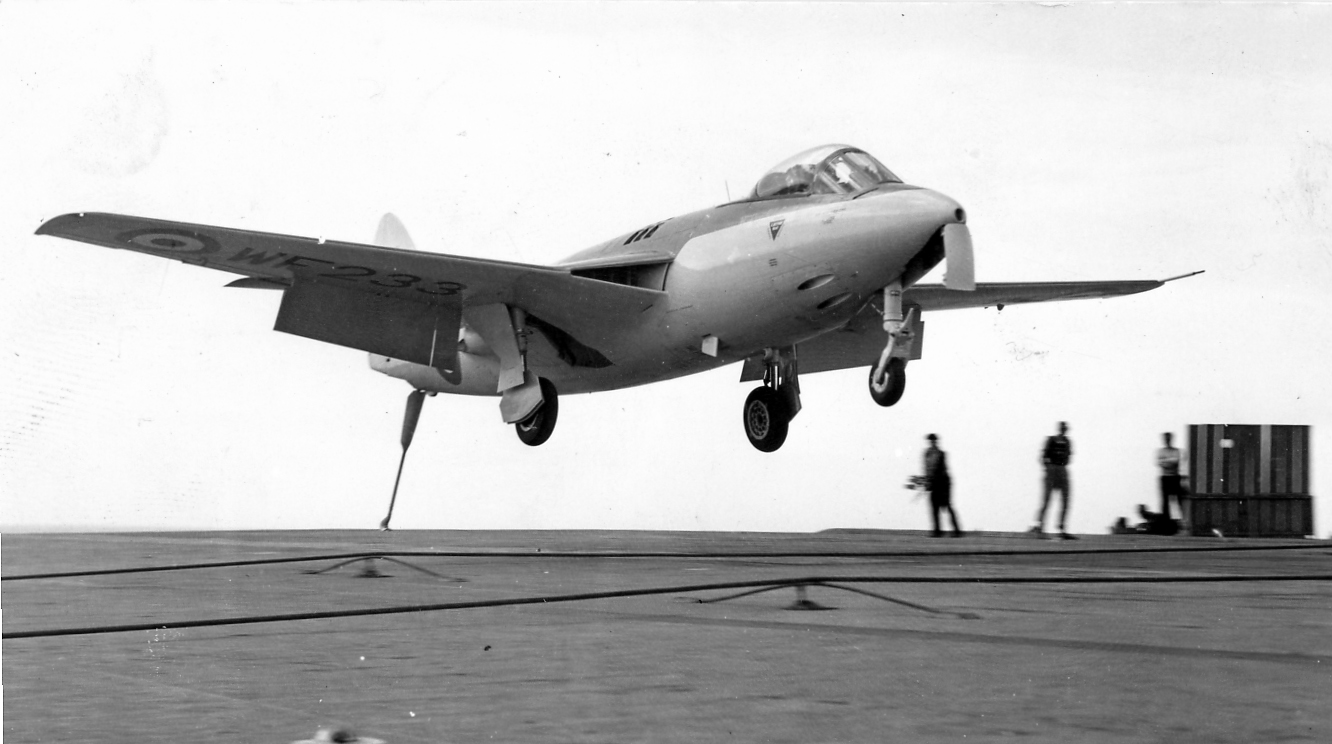
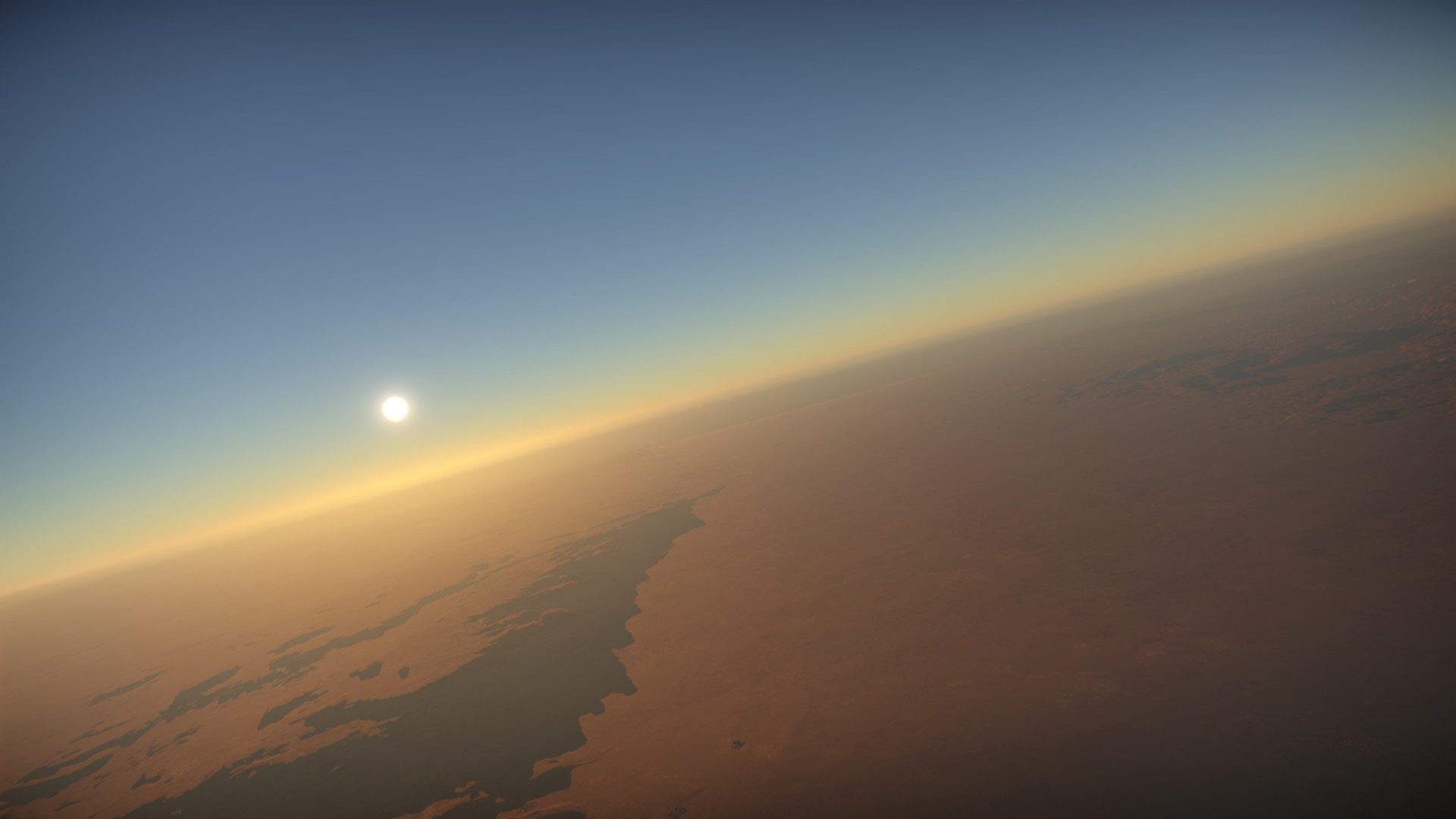
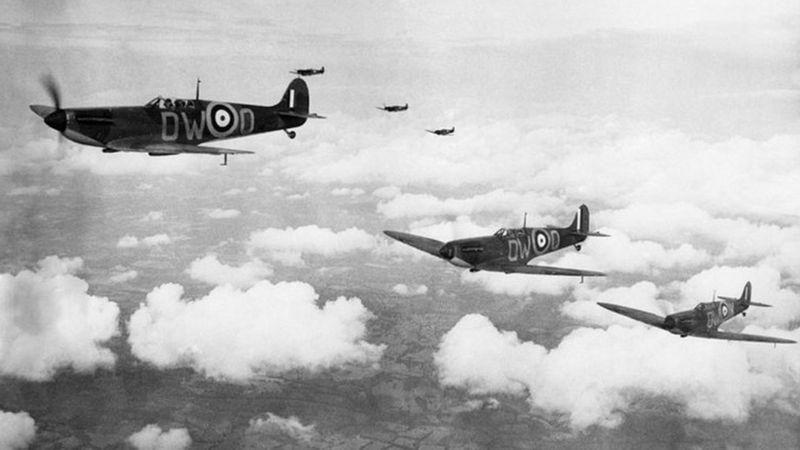
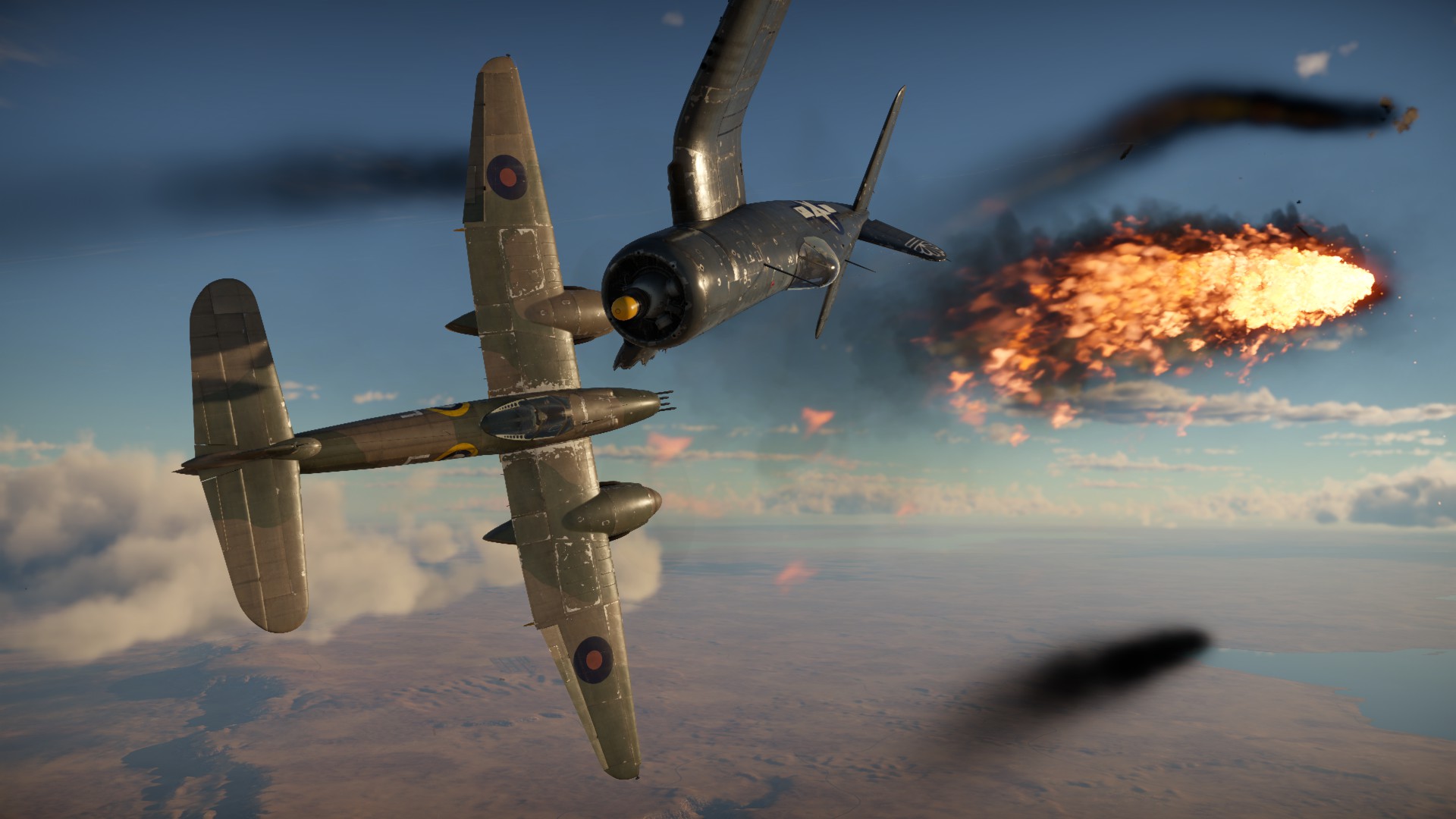
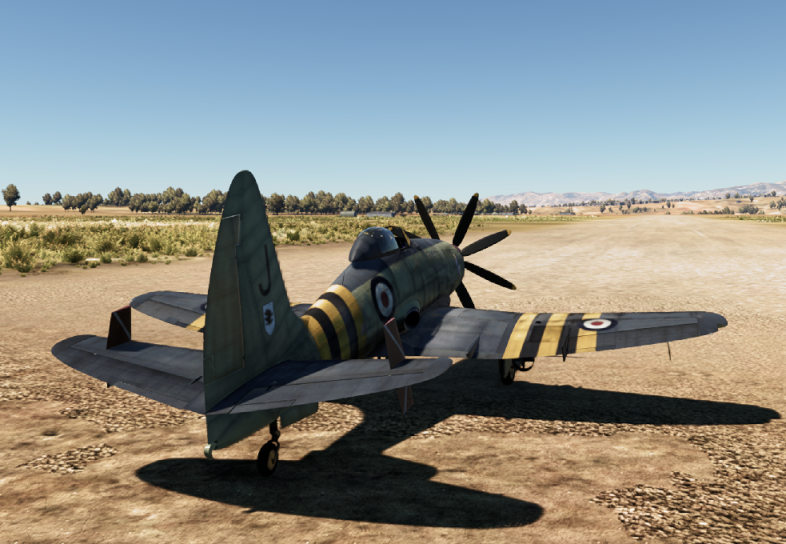
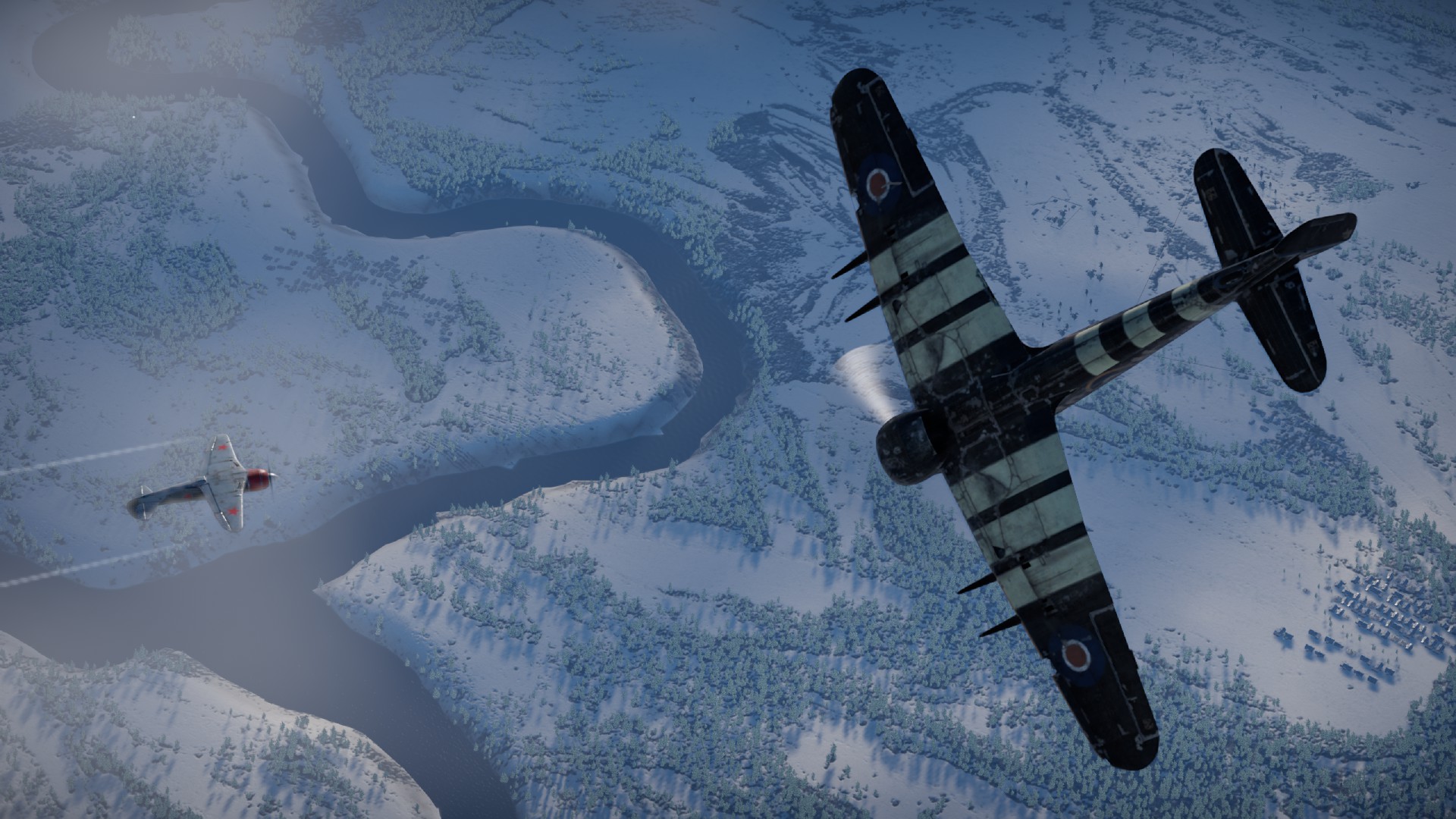
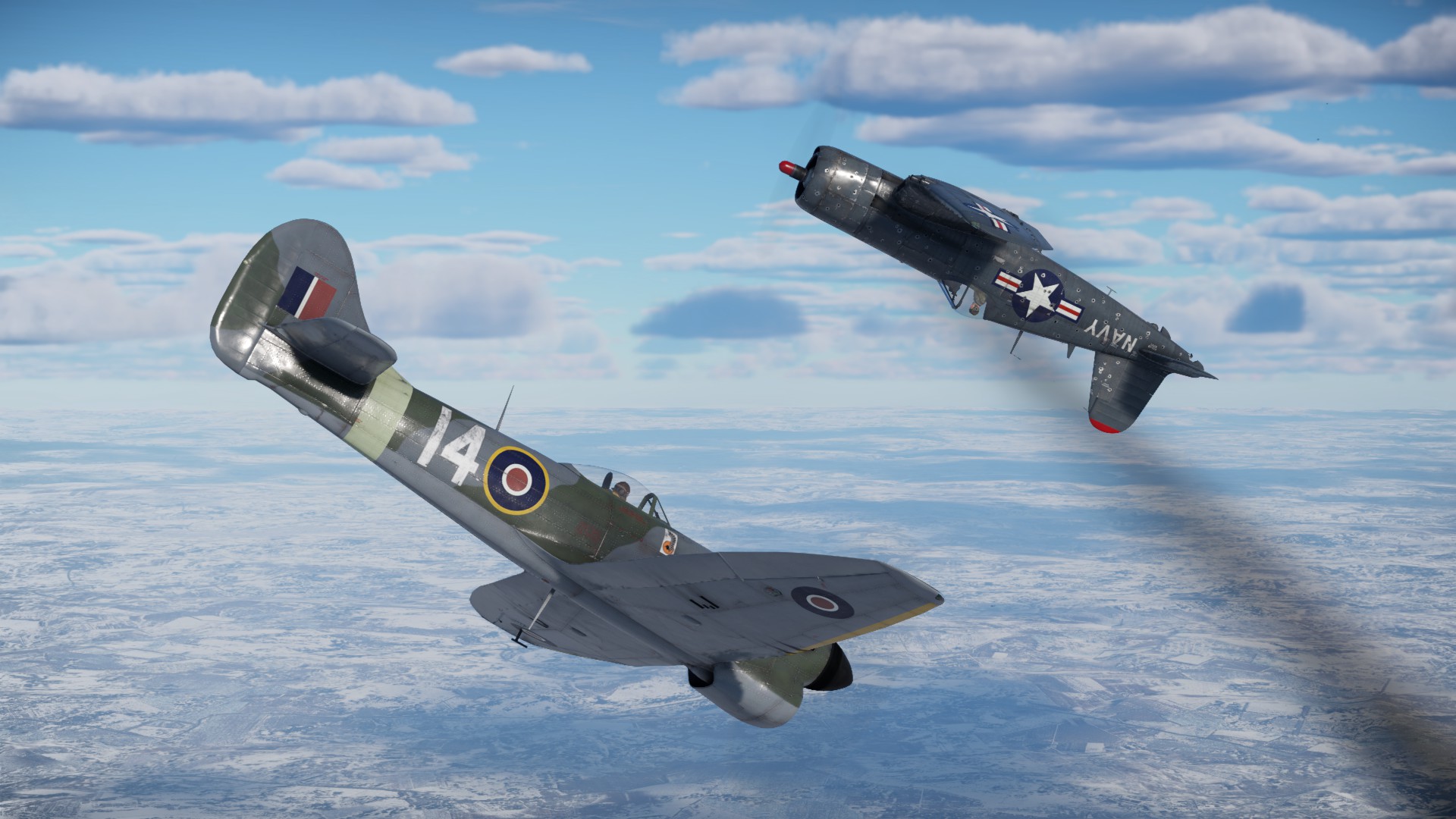
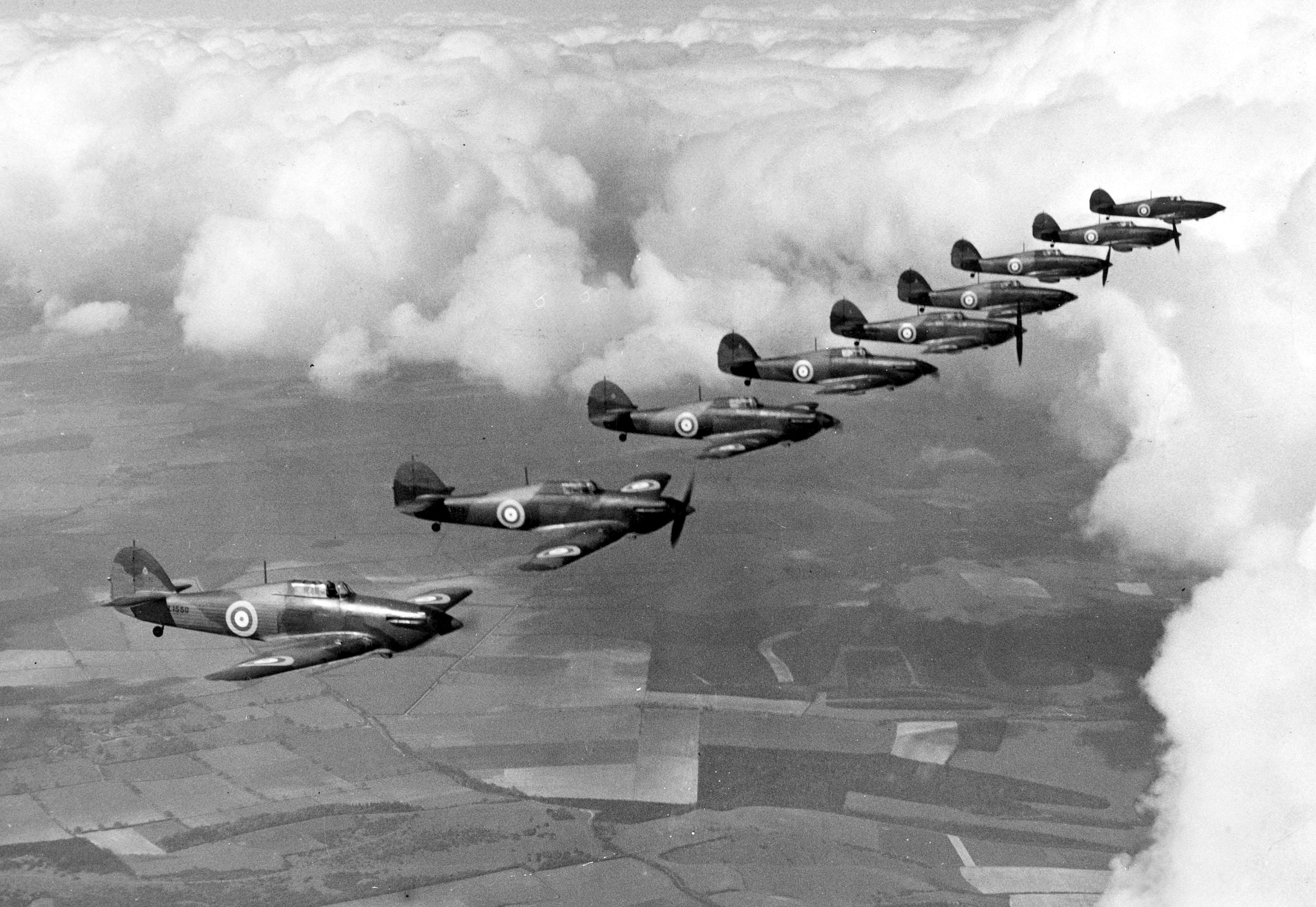
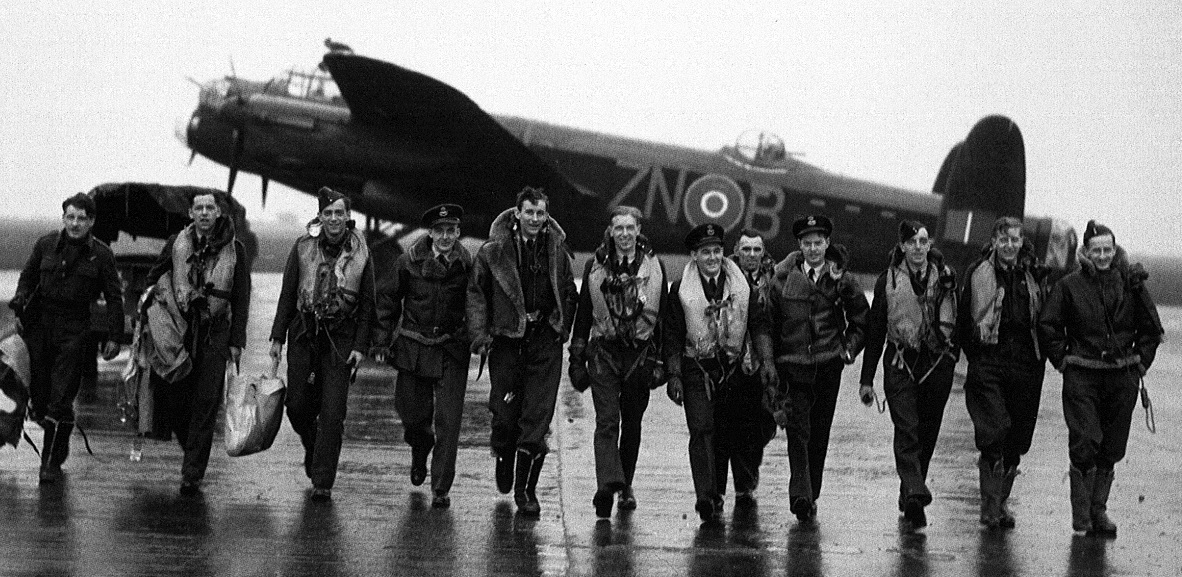
Leave a Reply